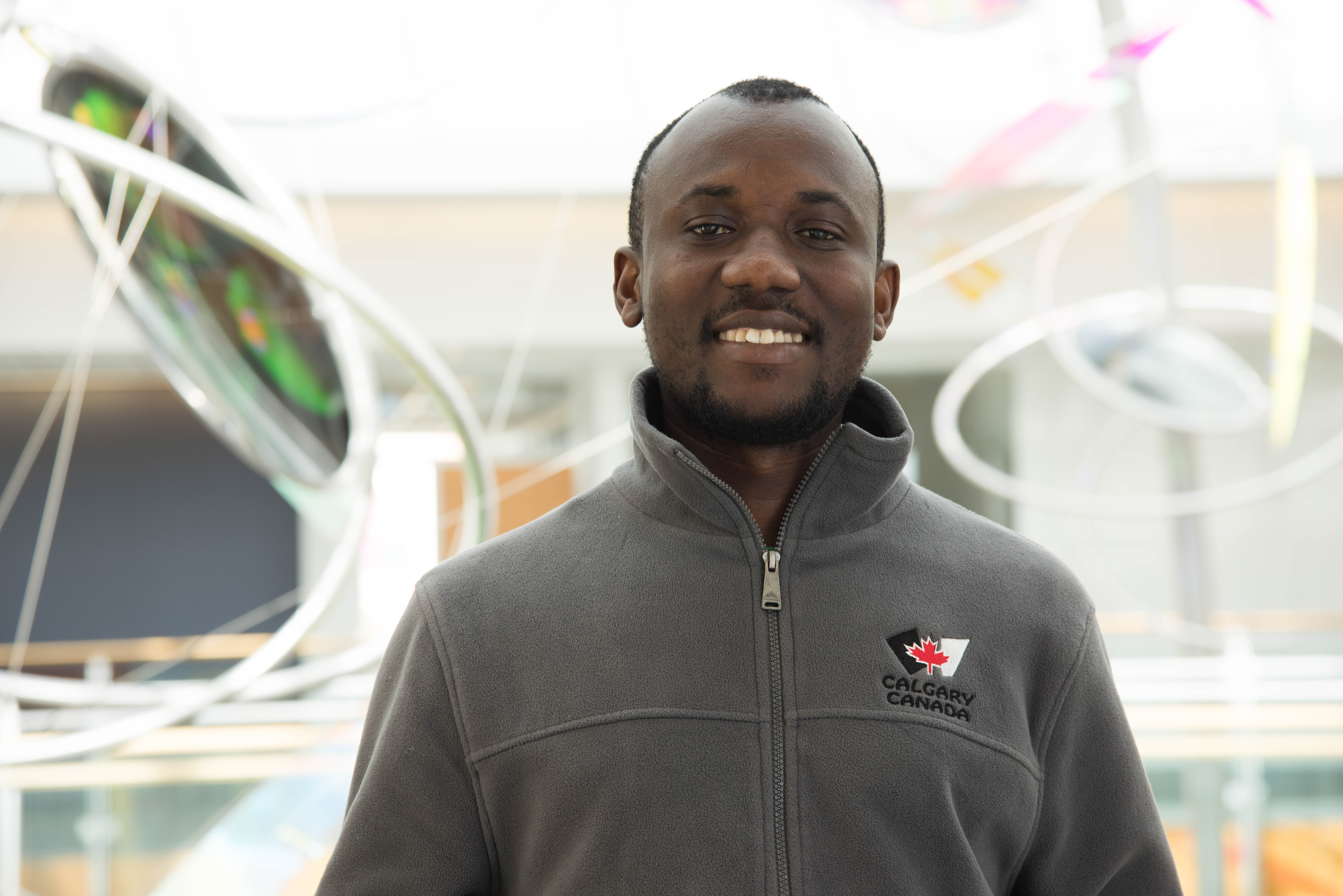News
Probing for answers
 Kwaku Tawiah, Ph.D. candidate, poses on the fifth floor of Bond LSC. | photo by Mariah Cox, Bond LSC.
Kwaku Tawiah, Ph.D. candidate, poses on the fifth floor of Bond LSC. | photo by Mariah Cox, Bond LSC.
By Lauren Hines | Bond LSC
Disease diagnosis takes money, time and technology — something rural communities don’t always possess. Kwaku Tawiah, a fifth-year graduate student, and researchers in the Burke lab are creating a probe that can diagnose and inhibit viral diseases cheaply, in less time and without electricity.
“With some of these infections, the faster you’re able to detect it, the better,” Tawiah said. “So, one of my motivations in grad school was to come up with some of these assays that don’t require all this time for experimentation.”
Some rural communities, like Tawiah’s hometown in Ghana, don’t have the electricity to operate diagnostic machines or the resources to afford them. The probe helps solve this problem.
The probe is a structure made up of a single strand of DNA that can fold into a unique 3D shape, which can recognize and bind to the surface protein of a virus.
“It’s a string of DNA, right?” Tawiah said. “What is unique about these probes is you can easily attach other things to the string of DNA.”
Tawiah and other researchers attach fluorescent molecules to the end of the DNA strand so when it binds to the surface protein, they can detect the virus.
Tawiah’s paper on the probe that can detect and inhibit Marburg, a cousin of the Ebola virus, will be submitted for peer review within a few weeks.
Even though Tawiah is graduating, other students in the lab want to expand the application of the probe.
Since virus surfaces have similar structures, the probe can be modified to detect and inhibit other viruses such as COVID-19.
“The beauty of what I do on the platform that we build is that it can be translated to other viruses,” Tawiah said. “So, with the platform for detection, you can essentially do the same thing for COVID, but you have to have the surrogate COVID virus particles…”
Currently, researchers in the lab are waiting for the particles and know the probe can bind to the virus, but they don’t know where exactly it can bind to.
“The lab is interested in using other techniques to find out where exactly the probe binds to on the surface of the virus,” Tawiah said.
While Tawiah is leaving to start his post doctorate in July to further develop low cost diagnostic methods, the Burke lab is continuing to probe for more answers.